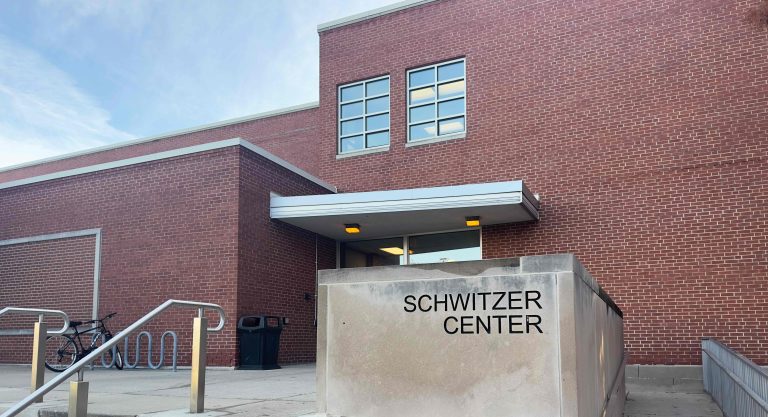Due to the COVID-19 pandemic, the University of Indianapolis offered this semester online and hybrid alternatives to courses that were once in person, according to the UIndy COVID-19 FAQ page. Planning at a university-wide level began by determining which courses needed an in-person experience, according to Mary Moore, interim dean of Shaheen College of Arts and Sciences, interim chief international officer and associate provost of accreditation, assessment & education innovations.
“From there, it [the planning] then gave us a sense of how dense the population would be on campus,” Moore said. “Given the commitment to social distancing, in a campus where most or all of our classrooms are fully used in some ways, in order to do that social distancing, we had to unpack.”
Department chairs and faculty set up courses that need to be offered based on the curriculum and the rotation of curriculum between semesters, Moore said. The departments also consider the faculty available, incoming student resources and having appropriate spaces, she said.
“It [A course schedule] gets built at the department level, but it gets looked at broadly at the college or the university level to make sure that we meet the needs of the different student populations,” Moore said.
In terms of accommodating different student populations, biology is the largest department in the Shaheen College of Arts and Sciences, according to Professor and Biology Department Chair Sandra Davis. In addition to having the most majors in the college, she said the department provides the most courses to other majors, such as nursing and health sciences. The department had logistical concerns in scheduling courses, part of which came from halving the maximum capacity of classrooms, according to Davis.
“We have 14 lab sections [of Biology 103],” Davis said. “So if we reduced the number of students to half, then we would have to try to figure out how to accommodate 28 lab sections in one room. So that was just impossible.”
The department has only five main labs, not all of them interchangeable, according to Mary Gobbett, assistant professor of biology and lab coordinator.
The labs have large equipment and immovable lab benches, so chairs and tables cannot be moved for social distancing, Davis said. Because of contamination concerns, some labs are not interchangeable, such microbiology and ecology labs, according to Davis. She said all these factors limit the department in terms of time.
“There [are] only 24 hours in a day,” Davis said. “So we cannot schedule all the [in-person] classes we would need to accommodate 10-person or 12-person sections.”
Davis said the department still wanted to provide students with lab experience and the ability to collaborate on experiments. She said Gobbet was the driving force behind a unique system to provide these opportunities. According to Davis, the options provided by this system give students flexibility in case they are high risk or need to quarantine
Under this system, students can check in and out of the labs, as well as use lab kits the department purchased from the university, Gobbett said. The different types of students and the options they have to complete their work make it complicated to classify the department’s delivery options, according to Gobbett.
“It is a very complicated department just to say ‘Did you pick a one, a two or a three?,” Gobbett said. “We are huge. We have a lot of needs, a lot of diversity. Ecology is not the same as cancer biology. So it is not quite as simple of an answer.”
In the School of Nursing, purely lecture-based courses which primarily consist of graduate students, were offered online, according to Dean of the School of Nursing Norma Hall. There are very few online courses for undergraduate students because most of those courses have a clinical or lab component, Hall said.
“The remainder of our courses are pretty much hybrid,” Hall said. ‘The reason they had to be hybrid is they have that clinical component to them. So [the students] are either going out to the clinical setting, either in the hospital room or in the community somewhere, or they are coming to campus for lab experiences.”
For their clinical rotations, student nurses are not assigned to COVID-19 patients due to health risks, Hall said. However, student nurses may still see COVID-19 patients in their paid or patient care technical roles, Hall said.
“It’s a fine balance really,” Hall said. “[The] reality is they [nursing students] may very well have contact with the COVID[-19] patient, but not while they’re doing their clinical hours with the school.”
One surprise to some faculty this semester was the number of students who like or prefer online courses, Moore said. She said that there are students who prefer and are very comfortable with an online environment.
“… There are really some students who are looking for that face-to-face [experience], but it is not an assumption you can make about all students,” Moore said. “You have students who, if given the choice, really enjoy the online experience too.”






